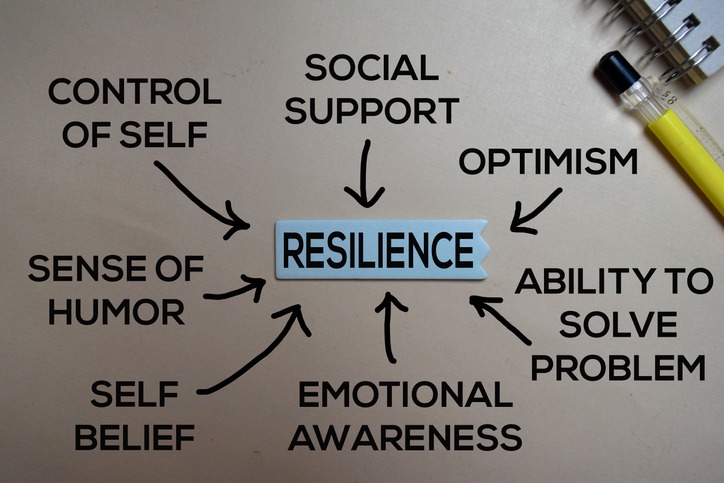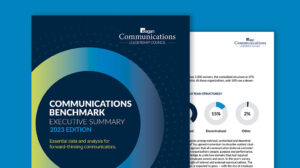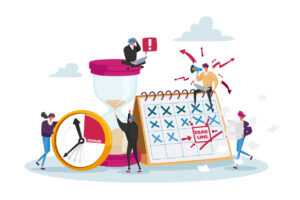How to recommit to resilience in the face of COVID fatigue
Here’s how leaders can help workers struggling to bounce back amid the ongoing pandemic.

On April 19, 2021, I experienced a sense of freedom and optimism the likes of which I last recall feeling at the end of a particularly grueling semester my junior year of college. On that day, I got my second dose of the vaccine and, like millions of others, felt ready to take on the world. Or at least visit it again.
Then, the delta variant took hold and all our plans stalled. The feeling of our excitement being quashed by this fresh threat was utterly demoralizing. How, I asked myself, do I sustain my energy and motivation—my joy—when I was feeling so disappointed? And how could I possibly summon the energy to help others trying to do the same?
In her September New York Times op-ed, “What should I do with my Covid fatigue?” Tish Harrison Warren, an Anglican priest, wrote that when we add disappointment to fatigue “we become the worst version of ourselves.” The trick, she seemed to say, is to understand perseverance and live in the present.
With the delta variant declining in some of the worst-hit areas of the United States—albeit even as other locations continue to suffer—companies are finally carrying out their reboarding plans, that sense of hope once again returning. But as people who are responsible for creating a positive employee experience, is that the sentiment we should encourage?
“I think this virus is here to stay with us and it will evolve like influenza pandemic viruses,” Dr. Mike Ryan, executive director of the World Health Organization’s Health Emergencies Program, said. If that’s true, our return to the office may be less of a reboarding and more of a “Chutes and Ladders” experience.
Now what?
Given this reality, it’s more important than ever for organizations to have a resilient culture and workforce. To be sure, we need to redouble our wellness efforts because the statistics indicate we are really struggling to find time for ourselves. But, some fresh approaches are needed, too, to sustain us in the months, maybe years, ahead.
1. Shift your mindset.
Instead of looking forward to a return to normal, think about encouraging your organization to adopt a new mindset, one that is more focused on what is rather than what will be.
If Dr. Ryan is right, we will have times where the activities in our lives feel normal and balanced, and times where we are much more restricted. The message we must send to our colleagues is that while we can and should plan for the future of our business, it’s important not to make too many assumptions about what we will and won’t be able to do socially, both on the job and off. Flexibility and making the most of the present are key to helping employees avoid burnout.
2. Bring joy back to the workplace.
Tragedy and uncertainty have dominated life for nearly two years, so it’s no surprise that every day we hear from communication leaders about just how much their organizations need an injection of lightheartedness. They are struggling with whether (and how) some level of fun and laughter should be introduced.
The good news is that there’s a strong business rationale for doing so. Injecting appropriate levels of humor and levity in our daily work interactions, either virtual or in-person, can literally change how our brains work, generating more alpha brainwaves that help us develop creative solutions, reduce stress and solve problems. Most important, humor builds resiliency, helping employees adapt to the challenges and changes that will continue to come their way. Try some group improv or standup comedy training, or check into how the powerful principles of humor are being applied in business toward effective change management.
3. Build a safe space.
Harvard professor Amy Edmondson coined the term “psychological safety” to describe a workplace where it’s OK to speak up with ideas, questions, concerns or mistakes. People don’t want to look ignorant, incompetent, intrusive or negative, so we are trained from an early age not to ask questions, admit weakness or mistakes, offer ideas that may be counter to the current thinking, or criticize the status quo.
During the pandemic, organizations have made strides in helping people feel cared for and supported. We need to extend this feeling into how we work by creating cultures that encourage teams to build a sense of mutual trust and openness. Dr. Edmonson says we do this by:
- Framing the work as a learning problem versus an execution problem.
- Emphasizing that we are all learning as we go, so we must include everyone’s voices and brains in the game.
- Admitting our own fallibility, i.e., “I may miss something, so I need to hear from you if I do.” This describes an organizational structure of teams with open and honest communication.
- Psychological safety balanced with motivation and accountability not only creates a positive environment for employees, it also produces high-performing organizations.
Beyond our own practices and the messages we convey in our organizations, our impact on the pandemic is limited. But we continue to have enormous potential to affect how we function as businesses and how our people feel about their work.
Now is the time to arm our teams with the tools they need to thrive.
Ann Barlow is the West Coast president and senior partner at Peppercomm.






